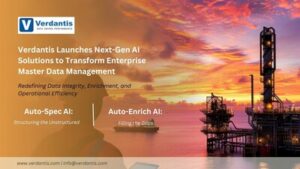Lumi AI Secures $3.7 Million to Enhance Conversational Analytics Platform

Lumi AI: Revolutionizing Data Analytics for Businesses
Lumi AI, a startup founded in 2023 by Ibrahim Ashqar and Tudor Boiangiu, is changing how companies interact with their data. With the aim to simplify data analytics, Lumi AI has raised $3.7 million in a seed funding round led by AgFunder. The investment will allow the Toronto-based company to expand its enterprise data analytics platform, which helps users access and interpret complex data from their enterprise resource planning (ERP) systems using natural language prompts.
Key Features of Lumi AI
Natural Language Interface
One of the standout features of Lumi AI is its natural language interface that integrates with clients’ supply chain software. This interface acts as an intelligent assistant, enabling users to ask questions in simple terms rather than relying on complex coding. This significantly reduces the time it takes to gather insights from data, which previously could take days to analyze.
Reducing Data Bottlenecks
In traditional settings, employees generally rely on specialized teams to extract data insights, often creating bottlenecks within organizations. As Ashqar explains, having to submit requests to the data team can lead to frustration and hidden opportunities within data sets. Lumi AI aims to eliminate these bottlenecks by allowing employees from various departments—like retail operations and account management—to retrieve critical data without needing coding skills.
Use Cases of Lumi AI
Supply Chain Focus
Initially, Lumi AI is concentrating on companies that operate sophisticated supply chain data models, especially those utilizing platforms like SAP or Oracle. These businesses often have extensive inventory and sales data. For instance, in a supermarket setting, on-shelf availability is crucial. If a supermarket has ample stock in distribution centers yet frequently deals with stockouts, Lumi AI can pinpoint the issue quickly, reducing analysis time from days to mere minutes.
Identifying Discrepancies
Another valuable use of Lumi AI is its ability to track discrepancies in orders and shipments. Large retailers often accumulate vast amounts of order data, making it challenging to recognize patterns. Lumi AI’s interface allows users to drill down to a granular level, helping them see what factors contribute to any discrepancies. This level of detail is vital for efficient operations.
Challenges and Solutions
Dashboard Overload
Mid-sized companies often struggle with having underdeveloped or no data teams. Lumi AI helps bridge that gap by providing preset prompts that assist in making data-driven decisions. Conversely, larger enterprises may suffer from what Ashqar calls "dashboard anarchy," where they have too many dashboards, many of which end up being ineffective. Lumi AI provides a streamlined approach to data visualization.
Data Security
Concerns over data security are paramount for many organizations. Lumi AI is designed so that raw data is processed only within the client’s infrastructure. This approach reassures companies that their sensitive data is secure and not shared externally, giving them peace of mind.
Rapid Onboarding and Future Innovations
Lumi AI’s onboarding process is designed to be efficient. While traditional implementations can take months, Lumi can often be set up in just days or weeks. For larger retailers, the setup was completed in under a week.
Looking ahead, Lumi AI plans to stay ahead in the rapidly evolving field of data analytics. One of the innovative concepts being explored is “agentic workflows,” where AI autonomously makes decisions based on predefined goals. The aim is for Lumi to evolve from performing as a senior data analyst to becoming an analytics manager that can proactively flag anomalies and insights.
Summary
Overall, Lumi AI is not just a tool for extracting insights but represents a shift in how businesses approach and democratize data analytics. The combination of simplification and rapid access can empower multiple departments within an organization, enabling quicker and more informed decision-making across various industries.





